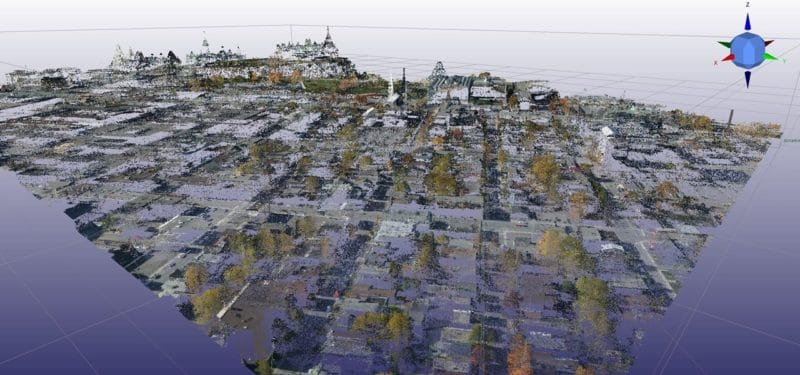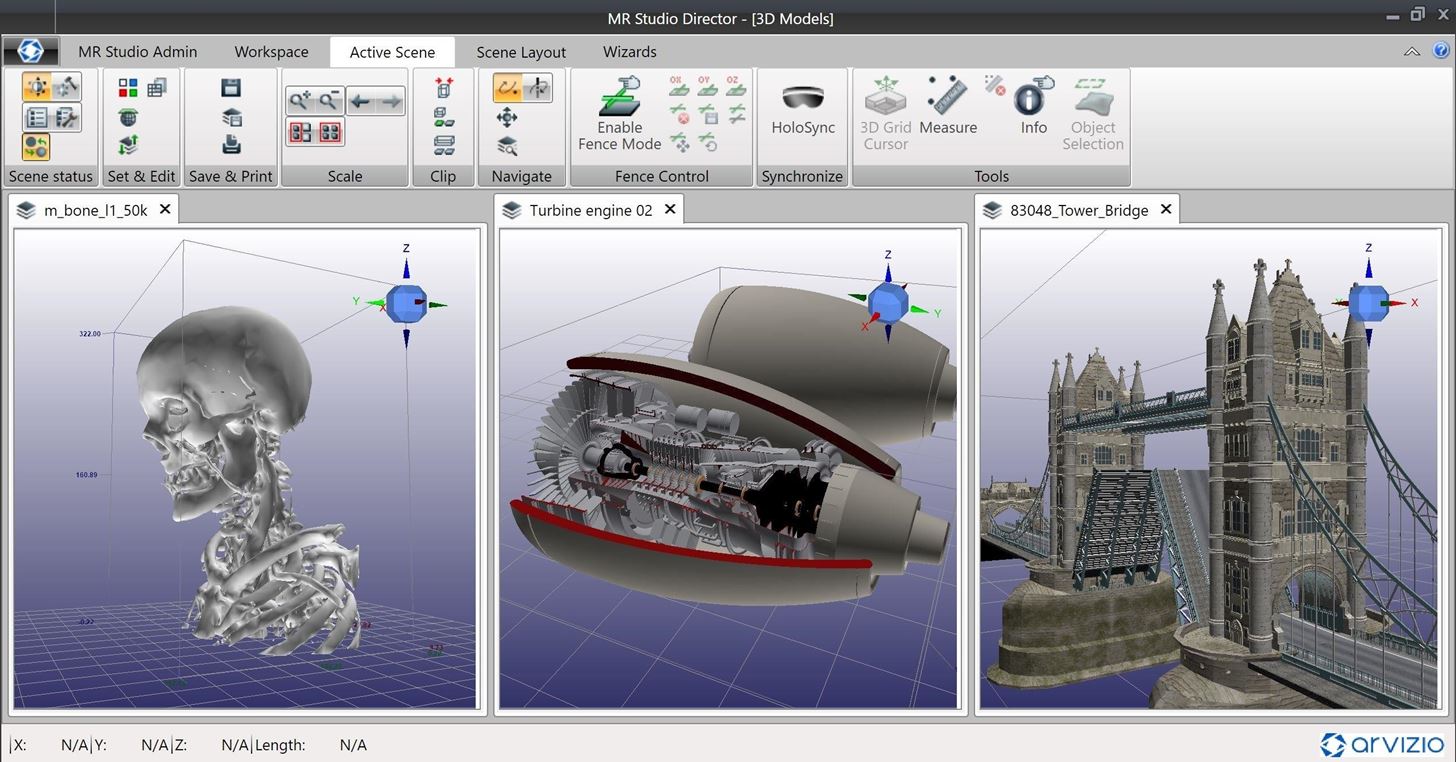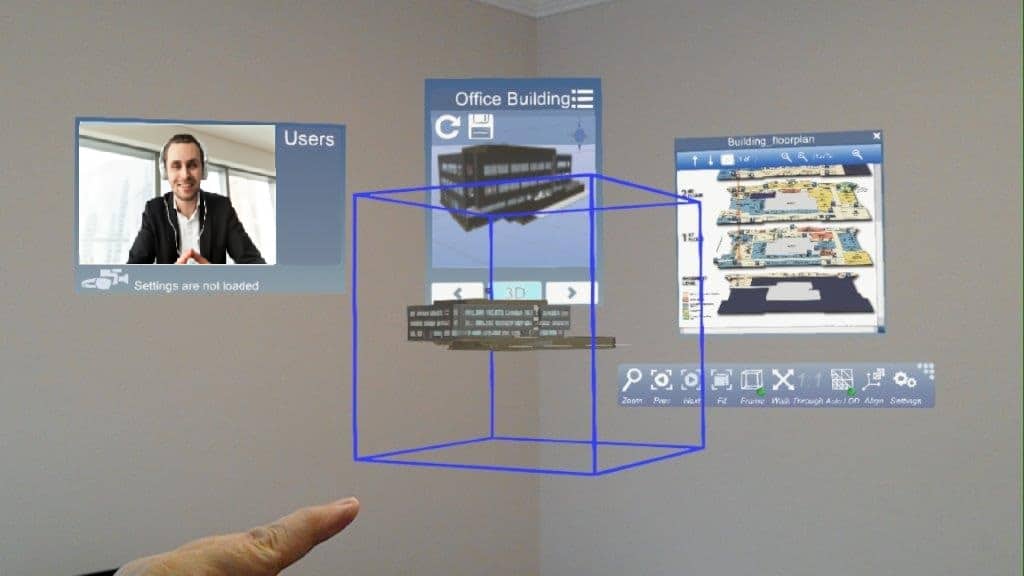
ARtillry Interviews is an ongoing series that profiles the biggest innovators in XR. Narratives are based on interviews with subjects but opinions and analysis are that of ARtillry. See the rest of the series here and our video interview show here.
One of AR’s proposed benefits is its synergy with the internet of things (IOT). IOT data from the sensors all around us will provide content & information layers that make AR useful and valuable. AR meanwhile provides an intuitive interface to display IOT data — a nice yin & yang relationship.
This is especially true in enterprise contexts. Picture industrial settings where machine readings and status levels are displayed on a technicians’ field of view for fast & intuitive (read: lower-cost) operational control. Both the IOT data, and the AR front-end make each other more valuable.
In design, engineering and manufacturing environments, AR also melds nicely because most AR software works with existing CAD file formats. That generally makes it easier to import 3D assets for AR visualization. But there are still several missing pieces to bring it all together.
This is where Arvizio comes in. The company optimizes AR visualization for teams in industrial settings. For example, CAD file sizes are often massive and difficult to transmit to on-site and remote teams, says CEO Jonathan Reeves, which Arvizio manages as part its MR Studio suite.
“Our specialization is the handling of extremely large 3D models,” Reeves told ARtillry, “where you have potentially millions of polygons or even billions of points in the case of lidar scans, which need to be visualized and made available for AR and MR experiences.”

The Glue
At the center of MR Studio is Studio Director, a control center to manage 3D models and distribute them across teams. MR Studio Immerse then renders those models on AR glasses like Hololens. And MR Studio Remote optimizes visualization for anyone viewing 3D models remotely via tablet.
Altogether, this creates a comprehensive platform that gets teams up and running with AR/MR visualization — especially teams that are spread out. That plus cross-platform support (tablets, etc.), boosts Arvizio’s value proposition and addressable market to a wider range of companies.
“The platform provides that glue,” said Reeves. “It allows you to bring the data in from different types of CAD systems. We then allow the ability to process that data and simplify the model scans and serve them up to get these very large models visualized on lightweight devices.”
A key part of the equation is that last part: efficiency in streaming and rendering massive 3D model files on devices like Hololens. Given the focus on remote teams and disparate devices, this throughput optimization is necessary for AR collaboration and visualization to work.
Arvizio accomplishes that in a way that’s analogous to foveated rendering in VR. By re-directing bandwidth, graphical processing and other compute resources to a specific focal point of a model — rather than streaming the entire file — it achieves a more efficient information delivery.
“You can pull up any portion of the model you like at any level of zoom, and we’ll dynamically just load that piece of the model,” said Reeves. “So rather than requiring tens of megabytes to cross the wire every few seconds to obtain that kind of view, we slice it and feed just what you need.”

Vertical Challenge
This approach, and the technical chops to pull it off, is inherited from Arvizio’s legacy business providing large-scale 3D models in the mining industry. This gave it a technical head start and a nucleus around which to to build an AR and MR platform, says Reeves.
Mining then naturally became the first target vertical to sell that platform into. The company therefore benefited from not only a technical head start but domain expertise in the needs and pain points of that market. This approach can have a knowledge-edge over horizontal XR plays.
From there, Arvizio expanded to other industrial verticals, including AEC and energy. Drivers for markets it enters and prioritizes include product/market fit and urgency for near-term adoption. For example, there’s a fit in medicine but large-scale adoption isn’t there yet.
This principle also applies to functions within companies. Sales & marketing are revenue centers with greater budget for tech that makes them more effective. And brief sales sessions (demoing products in 3D) are more conducive to todays bulky headsets than all-day industrial operations.
“A lot of the ROI is where the technologies are being used by our customers to demonstrate their capabilities to their customers,” said Reeves. “The mixed reality side of the equation leans more heavily on the sales and marketing and promotional side than it does to operational savings.”

Starting Point
One target application Reeves is particularly excited about is telecom. This is simply because impending 5G rollouts are going to mean more capability to stream various flavors of XR. And that in turn requires engines that optimize throughput in the ways that Arvizio is developing.
“The complexity of scanning the real world, or working with large engineering scenarios and being able to feed those into mixed reality headsets is sort of a long term game.” said Reeves, “We think that is going to increase in value as the market evolves.”
Another trend that could drive long-term demand for optimization tools like Arvizio is the proliferation of IOT. As mentioned, AR and IOT go together and that will only increase as the cost of sensors goes down while their integration in enterprise and consumer products goes up.
And speaking of macro trends that compel better data management, optimization and rendering, the AR cloud looms large. Generating spatial maps for the physical world will create a massive corpus of data that will have to be managed in all kinds of ways that Arvizio is primed to tackle.
“We picked enterprise mixed reality as our starting point, but we’re now working on different client devices so we’re going to be adding ARkit to the equation later this year,” said Reeves. “At the end of the day, this type of capability is somewhat independent of the headset itself.”
For deeper XR data and intelligence, join ARtillry PRO and subscribe to the free ARtillry Weekly newsletter.
Disclosure: ARtillry has no financial stake in the companies mentioned in this post, nor received payment for its production. Disclosure and ethics policy can be seen here.
